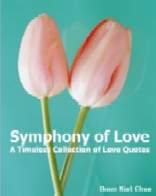Imported models deemed safest vehicles
By TOM KRISHER, AP Business Writer
Tue Nov 21, 8:43 AM ET
Imported models took all 13 spots on the U.S. insurance industry's list of safest vehicles this year, due mainly to a new requirement that all cars and sport utilities on the list have systems to keep them stable in an emergency.
The Insurance Institute for Highway Safety isn't bashful about its reasons for pushing electronic stability control, saying that its studies show up to 10,000 fatal crashes per year could be prevented if every vehicle had the safety feature.
"The research is so compelling that electronic stability control could help prevent many crashes from happening in the first place," institute spokesman Russ Rader said.
The list of 2007 model year winners being released Tuesday includes the Audi A6 in the large car category; the Audi A-4, Saab 9-3 and Subaru Legacy (with optional stability control) for midsize cars; the Hyundai Entourage and Kia Sedona minivans; the Mercedes M-class and Volvo XC90 luxury sport utility vehicles; the Acura RDX, Honda Pilot and Subaru B9 Tribeca midsize SUVs; and the Honda CR-V and Subaru Forester small SUVs.
All 13 vehicles are tops in protecting people in front, side and rear crash tests based on institute tests during the year. Pickup trucks were not included because the institute has not yet tested their side crashworthiness.
Electronic stability control senses when a driver may lose control of the vehicle and automatically applies brakes to individual wheels to help make it stable and avoid a rollover.
The National Highway Traffic Safety Administration has proposed requiring the technology on all new vehicles by the 2012 model year, but institute President Adrian Lund said that's not soon enough.
"We think that they are too slow," Lund said. "Automakers will probably have it as standard equipment by the time the federal standards actually take full effect."
Domestic manufacturers had no models on the list of safest vehicles because they haven't moved quickly enough to add stability control to their models, Lund said in a telephone interview.
For instance, Ford Motor Co. would have had three cars — the Ford Freestyle crossover and the Mercury Montego and Ford 500 sedans — make the list if they had stability control, the institute said. The 500 and the Montego earned top safety picks last year.
Ford spokesman Jim Cain said all three vehicles will get stability control for the 2008 model year, with versions equipped with the safety feature on sale sometime next year. The company has not determined whether the feature will be standard or optional, he said.
"We're moving in the same direction as the institute," he said.
Ford has said previously that it would put stability control on its entire lineup by the end of 2009.
General Motors Corp. said nearly two years ago that it would make the technology standard in all vehicles by 2010, including all SUVs and some full-size pickups in the 2007 model year.
Toyota has said stability control would be a standard feature across all its models by 2009.
DaimlerChrysler AG said it will have the technology on 54 percent of its vehicles this model year and will meet the federal government's timetable for the rest.
All 2007 SUVs, pickups and minivans produced by Honda Motor Co. carry the technology, while Hyundai Motor Co. said it is standard equipment on 70 percent of its 2007 vehicles.
Several other vehicles, including nine Toyota Motor Corp. models, would have made the list if they had stability control, the institute said.
No small cars made this year's list. The Honda Civic, which won last year, was knocked off due to lack of stability control on most models. The one version that has the feature doesn't have head restraints for rear crash protection, the institute said.
SUVs were eligible to win for the first time this year because the institute conducted side-impact tests on many models.
The institute said the overall awards will help people quickly compare vehicles without having to review results from multiple tests.
 Stumble It!
Stumble It!

